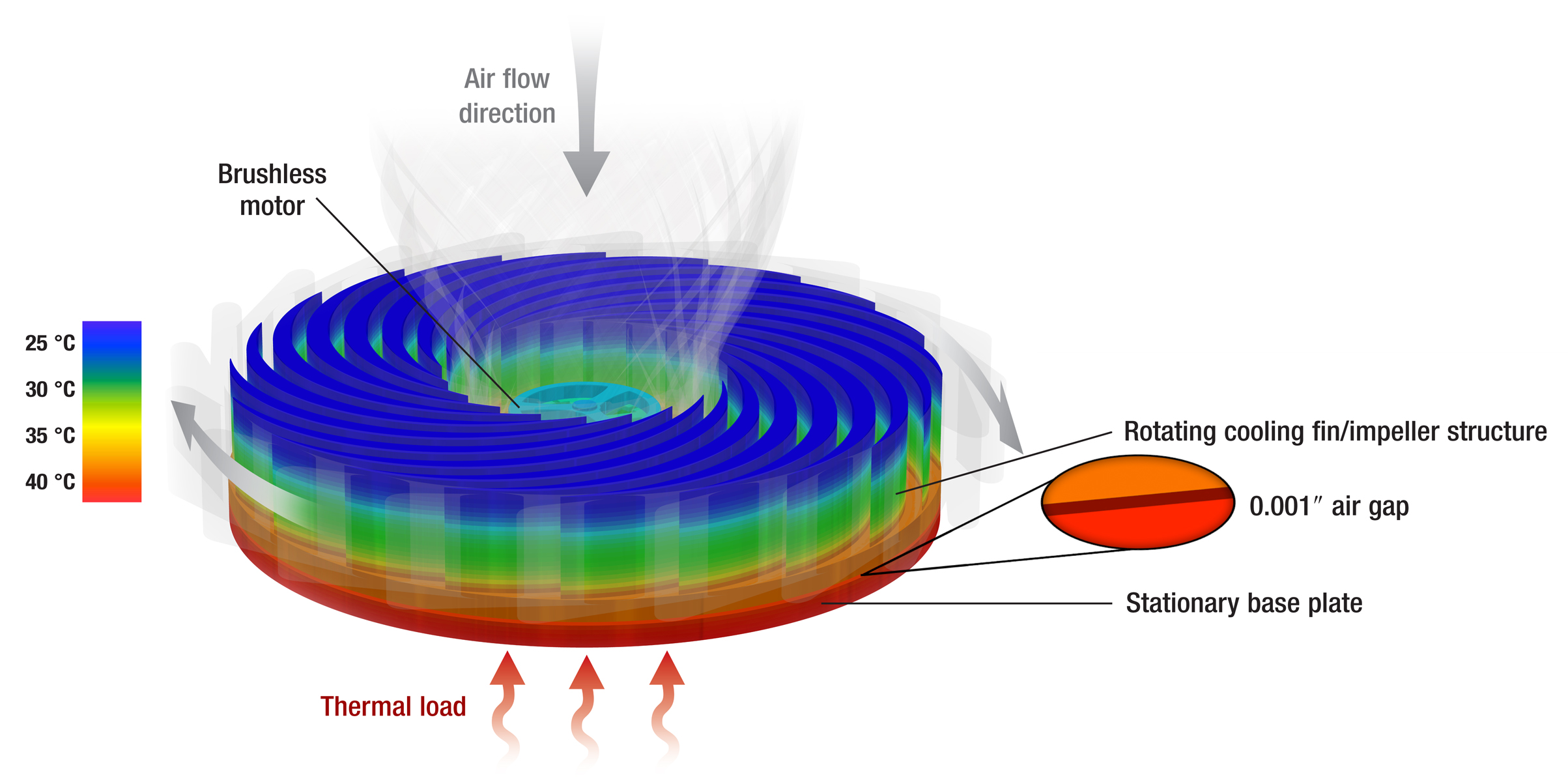
The heatsink market has been relatively unchanged for years: you have a static, thermally conductive block with an array of heatpipes and fins alongside a fan. Naturally, that configuration varies depending on the noise level or cooling capacity desired, but most heatsink manufacturers are essentially reinventing the wheel.
Hoping to shake things up a bit, Sandia National Laboratories has unveiled a new technology that promises to "dramatically alter the air-cooling landscape." Referred to as the "Sandia Cooler" or the "Air Bearing Heat Exchanger," the contraption relies on rotating fins instead of a fan to dispel heat. The organization says conventional heatsink and fan combinations have a ton of "dead air" against the fins where there isn't a lot of airflow, and Sandia's design solves this limitation.
"In a conventional CPU cooler, the heat transfer bottleneck is the boundary layer of 'dead air' that clings to the cooling fins. With the Sandia Cooler, heat is efficiently transferred across a narrow air gap from a stationary base to a rotating structure. The normally stagnant boundary layer of air enveloping the cooling fins is subjected to a powerful centrifugal pumping effect, causing the boundary layer thickness to be reduced to ten times thinner than normal," the company explains.
The Sandia Cooler is said to dramatically increase cooling performance while occupying up to ten times less space than current state-of-the-art CPU coolers. It's also quieter, immune to dust clogging, and more power efficient. In fact, Sandia claims its technology could cut US power consumption by up to 7% if widely adopted. The group believes its technology is suitable for most computers and electronics, as well as household appliances like air conditioners.
For more information visit official Sandia National Laboratories website.


Recommended Comments
There are no comments to display.
Join the conversation
You can post now and register later. If you have an account, sign in now to post with your account.